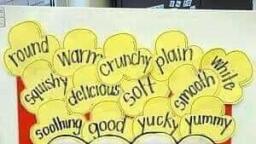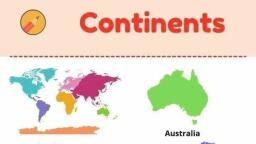Question 2 :
When a beam of light from an object meets actually at a point after reflection from a mirror then the image formed is known as<br>
Question 3 :
When a  beam of light from an object appears to meet at a point after reflection from a mirror then the image formed is known as:<br/>
Question 4 :
What is the basic difference between a real image and a virtual image ?
Question 6 :
A movie projector forms real images. Why is it not inverted?
Question 7 :
Fill in the blank:<br/>A _____ image is one which can be obtained on a screen.
Question 12 :
<p>An object has an image thrice of its original size when kept at<br>$8 cm$ and $ 16 cm$ from a convex lens focal length of the lens is</p>
Question 14 :
State whether the following statement is True or False. <br/>A concave lens is a divergent lens and is used in projectors
Question 16 :
Which of the following light color component is not present in thewhite light ?
Question 19 :
The splitting of white light into seven colors is known as ______.<br>
Question 20 :
The band spectra (characteristic of molecular species) is due to emission of radiation
Question 24 :
If a newton's colour disc composed of seven colours is rotated at high speed, it appears as
Question 25 :
Due to which phenomena the combination of red, green and blue forms the same white colour<br>
Question 28 :
Consider the following two statements $A$ and $B$ and identify thecorrect choice in the given answers<br>$A :$ Line spectra is due to atoms in gaseous state<br>$B :$ Band spectra is due to molecules<br>
Question 29 :
When a drop of water is introduced between the glass plate and plano-convex lens in Newton's rings system, the ring system<br>
Question 30 :
The colour are characterised by which of following character of light.
Question 31 :
Assertion: The colour of the green flower seen through red glass appears to be dark.
Reason: Red glass transmits only red light.
Question 34 :
A ray of light after passing through a medium were spread up into different colours. The phenomenon is called :
Question 35 :
The splitting of white light into several colours on passing through a glass prism is due to
Question 36 :
The splitting of white light into its colored components is called _____.
Question 37 :
Splitting of light into its constituent colours is known as :<br/>
Question 39 :
When white light enters a prism, it gets split into its constituent colours. This is due to:
Question 40 :
When white light passes through a dispersive medium, it breaks up into various colours. Which of the following is true?
Question 41 :
Clouds are white because of light scattering off of water droplets.
Question 43 :
The phenomenon due to which white light splits into seven colours on passing through a prism is called _________
Question 47 :
The phenomenon due to which light splits up into seven colours, on passing through an equilateral prism is called :
Question 48 :
The splitting of white light into several colours on passing through a glass prism is due to -
Question 49 :
Why do we study the Dispersion phenomenon using a glass prism and not a glass slab ?
Question 51 :
In the image formed by a plane mirror, the left of the object appears on the right and the right appears on the left. This is called lateral inversion.
Question 52 :
A ray of light is incident on the plane mirror at rest. The mirror starts turning at a uniform acceleration of $2\pi rad/s^{2}$ about an axis in plane of mirror. The reflected ray at the end of $\dfrac{1}{4}$s must have turned through:  
Question 54 :
The locus of a point which moves so that its distance from x-axis is double of its distance from y-axis is
Question 55 :
A man standing in front of a plane mirror finds his image at a distance $6$ metres from himself. What is the distance of man from the mirror?
Question 56 :
Assertion: Different colours travel with different speed in vacuum. <br>Reason : Wavelength of light depends on refractive index of medium.
Question 57 :
Assertion : If a plane glass slab is placed on the letters of different colours all the letters appears to be raised up to the same height.<br>Reason : Different colours have different wavelengths.
Question 58 :
State whether the following statement is true or false :<br>A diverging mirror is used as a rear-view mirror.
Question 59 :
The surface of the spoon which is curved inwards can be approximated to be ($a$) .......... mirror and the surface of the spoon which is bulged outwards can be approximated to ($b$) ......... mirror.
Question 60 :
A clock fixed on a wall shows time $04:25:37$. What time will its image in a plane mirror show?
Question 61 :
The reflectivity percentage of incident lighton earth is meteorologically called as
Question 63 :
A spherical mirror and a thin spherical lens have each a focal length of $-15$ cm. The mirror and the lens are likely to be
Question 65 :
Which of the terms is not used in a linear programming problem?
Question 66 :
The focal length of a mirror is +60 cm. Which kind of mirror it is?
Question 67 :
If $u$ represents object distance from pole of spherical mirror and $v$ represents image distance pole of mirror and $f$ is the focal length or the mirror, then a straight line $u = v$ will cut $u$ versus $v$ graph at
Question 68 :
A concave lens of focal length 20 cm placed in contact with a plane mirror acts as a convex mirror of focal length
Question 69 :
When light enters a dispersive medium, light wave of different wavelength travels with different velocities.
Question 70 :
State whether the following statement is True or False?The size of the image produced by plane mirror is the same as that of the objects. 
Question 71 :
Assertion: Dispersion of light occurs because velocity of light in a material depends upon its colour.
Reason: The dispersive power depends only upon the material of the prism, not upon the refracting angle of the prism.
Question 72 :
Assertion: A ray of white light shows no dispersion on emerging from a glass slab although dispersion occurs inside the glass slab.
Reason: The velocity of light inside the glass slab is same for all different colours.
Question 73 :
Assertion: All the materials always have the same colour, whether viewed by reflected light or through transmitted light.
Reason: The colour of material does not depend on nature of material.
Question 74 :
When a divergent beam of light is incident on aplane mirror, the image formed is
Question 75 :
A ray of light moving from an optically rarer to a denser medium
Question 76 :
A ray of light strikes a mirror at an angle of $\displaystyle { 60 }^{ o }$ to the normal. The mirror is then rotated $\displaystyle { 18 }^{ o }$ anticlockwise, What is the angle that the initial reflected ray and final reflected ray will have? 
Question 77 :
Assertion: A convex lens of glass ($\mu$ = 1.5) behave as a diverging lens when immersed in carbon disulphide of higher refractive index ($\mu$ = 1.65)
Reason: A diverging lens is thinner in the middle and thicker at the edges.
Question 78 :
Fill in the blanks:<br/>Magnification of convex mirror is in range _________ and of concave mirror is in range _______
Question 79 :
A point object is placed in front of a plane mirror. If the object and the mirror start moving away from each other with speed v along a straight line, then speed of the image with respect to mirror is
Question 80 :
Which of the following mirrors has a wide field of view?
Question 81 :
Assertion: We can hear around corners, but we cannot see around corners.
Reason: Wavelength of sound in much greater than wavelength of light.
Question 82 :
A virtual image larger than the object can be produced by a<br>
Question 83 :
State whether the following statement is True or False. <br/>You can see a rainbow only when your back is towards the sun
Question 84 :
The spectrum obtained from a sodium vapour lamp is an example of
Question 85 :
A piece of cloth looks red in sun light. If it is held in the blue portion of a solar spectrum, it will appear
Question 86 :
Assertion: There is no dispersion of light refracted through a rectangular glass slab.
Reason: Dispersion of light is the phenomenon of splitting of a beam of white light into its constituent colours.
Question 87 :
Mark True if the statement is true and False if it is false:<br>We can obtain a real, enlarged and inverted image by a concave mirror.<br>
Question 88 :
A light is incident normally on a mirror. The value of angle of reflection will be______
Question 89 :
A driving mirror on a car is never concave because :
Question 90 :
A short pulse of white light is incident from air to a glass slab at normal incidence. After traveling through the slab, the first colour to emerge is
Question 91 :
What causes difference in velocity of colours while passing from one medium to another through glass prism?<br>
Question 92 :
Due to which property of colours they appear differently though the sunlight is passed through only one medium?<br>
Question 93 :
An object looks red when seen through a piece of red glass. What is the actual colour of the object?
Question 94 :
Write true or false for each statement<br>Light travels at a lower speed in water than in air.
Question 95 :
While standing in front of a plane mirror, if you touch your ............ ear with the  right hand, it will be seen in the mirror that your right ear is touched with your ................ hand.<br/>
Question 96 :
The spreading of white light into its component colours is known as.
Question 98 :
Assertion: Blue colour of sky appears due to scattering of blue colour.
Reason: Blue colour has shortest wave length in visible spectrum.
Question 99 :
Which of the following are the main categories in Spherical Mirrors ?
Question 100 :
The light which refracts most while passing through a prism is
Question 101 :
A spherical convex surface separates object and image space of refractive index $1$ and $4/3$ respectively. If radius of curvature of the surface s $0.1\ m$, its power is
Question 102 :
A perfectly reflecting mirror has an area of $1\ cm^{2}$. Light energy is allowed to fall on it for $1\ h$ at the rate of $10W/ cm^{2}$. The force that acts on the mirror is:
Question 103 :
Which type of an image is formed by a plane mirror?
Question 104 :
Image formed by a plane mirror is<br/>a) of same size as that of object<br/>b) at the same distance behind the mirror as the object in front<br/>c) erect, virtual<br/>Mark the correct statements:<br/>
Question 105 :
A concave shaving mirror has a radius of curvature of 35.0 cm. It is positioned so that the (upright) image of a mans face is 2.50 times the size of the face. How far is the mirror from the face?















































